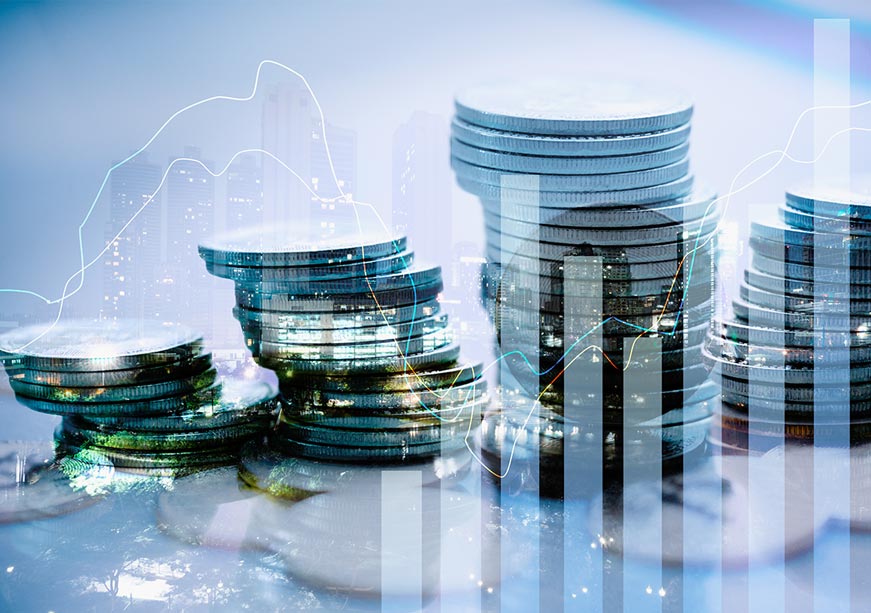-
CENTRES
Progammes & Centres
Location
India must boost domestic production, strengthen international partnerships, and adopt sustainable practices to reduce dependence on China for critical minerals.

Image Source: Getty
This is the 164th in the China Chronicles series
India stands at a critical juncture, with an audacious goal of achieving 50 percent of its cumulative electric power installed capacity from non-fossil fuel-based energy by 2030. Beyond clean energy, this ambition symbolises India’s attempt to reduce its dependence on China for critical minerals. Critical Minerals like lithium, cobalt, and rare earth elements are vital for the production and efficiency of clean energy technologies, like electric vehicles (EVs), enabling the storage and generation of renewable energy.
However, China’s dominance in mineral production raises significant concerns about supply chain resilience. In response, India is striving to lessen its dependence on China by ensuring equitable access and advocating for sustainable extraction practices.
The demand for these materials is poised to surge dramatically in the coming years. As noted by UN Secretary-General António Guterres, the need for minerals, such as copper, lithium and cobalt, is set to increase almost fourfold by 2030. However, he stated“The extraction of critical minerals for the clean energy revolution—from wind farms to solar panels and battery manufacturing—must be done in a sustainable, fair and just way,”
World Bank has predicted that, under a 2-degree scenario, the production of graphite, lithium, and cobalt must increase by over 450 percent from 2018 levels by 2050 to meet the demand for energy storage technologies.
Other scenarios such as the net zero of the International Energy Agency state that achieving global net-zero emissions by 2050 would necessitate a transition requiring six times more mineral inputs by 2040 compared to today. Furthermore, World Bank has predicted that, under a 2-degree scenario, the production of graphite, lithium, and cobalt must increase by over 450 percent from 2018 levels by 2050 to meet the demand for energy storage technologies.
China dominates global mineral refining, processing 68 percent of nickel, 40 percent of copper, 59 percent of lithium, and 73 percent of cobalt. It leads in producing 20 critical minerals, accounting for 60 percent of global production and 85 percent of rare earth processing. Despite not being a major mining centre, China heavily invests in mining, reaching US 19.4 billion in 2023. Over the past decade, China’s overseas mining investments, especially in lithium, nickel, and cobalt, have surged, with US$ 10 billion invested in the first half of 2023 alone.
Five of the seven lithium assets in Africa set to start production in 2027 are partly owned by Chinese companies. China accounted for 44 percent of global lithium M&A investments over the past three years, focusing on early-stage projects. Since 2021, China has accelerated lithium asset acquisitions, becoming the world’s third-largest lithium producer.
China’s National Food and Strategic Reserves Administration has built up critical material stockpiles, like gallium and tungsten, during the financial crisis and metal price slump. This strategic buffer protects against short-term disruptions and volatile prices, benefiting both military and non-military sectors.
Fueled by substantial investments and stockpiling strategies, this supremacy highlights three key reasons behind China's emergence as a leading player in critical minerals.
China sold more EVs than the US, capturing two-thirds of the global market, and installed 200 GW of solar capacity, half the global total.
Firstly, China’s aggressive expansion in manufacturing clean energy technologies, such as solar panels, wind turbines, and EVs, created a massive domestic demand for critical minerals. In 2023, China sold more EVs than the US, capturing two-thirds of the global market, and installed 200 GW of solar capacity, half the global total. Secondly, China's long-term policies, including substantial subsidies and financial support, have significantly boosted its wind, solar, and EV markets, and directly funded rare earth companies to enhance production capabilities. Thirdly, China's “Going Out Strategy,” launched in 2000, aggressively promotes foreign investments to secure large resource deals, supported by policymakers, policy banks, and state-owned industries, achieving unparalleled success even compared to the largest private global mining companies.
Thus, China's dominance in critical minerals stems from extensive refining, strategic global mining investments, and robust domestic policies, positioning it as a global leader. Understanding this is crucial for India's quest for mineral independence.
India seeks critical minerals independence to reduce reliance on Chinese imports. Through leveraging domestic resources, forging international partnerships, investing in refining, adopting sustainable practices, and recycling, India aims to break China's grip and become a global market leader.
The country has identified 30 critical minerals, such as lithium, cobalt, nickel, copper, and rare earth elements, essential for key strategic sectors, including defence, telecommunications, space, and high-tech electronics. To this end, the Indian government has made a decisive move with its 2024-25 Budget, announcing the Critical Mineral Mission. This initiative focuses on boosting domestic production, recycling, and securing overseas acquisition of these vital minerals. The Mission is also set to promote technology development, create a skilled workforce, and implement a producer responsibility framework. Additionally, the auction of offshore mining blocks will be initiated to advance mineral exploration.
The Mission is also set to promote technology development, create a skilled workforce, and implement a producer responsibility framework.
At the global level, India is strengthening its mineral diplomacy by forming alliances with mineral-rich nations. Through partnerships with the United States (US), Australia, and Japan such as the Mineral Security Partnership, and bilateral engagements with countries like Argentina, Chile, and the European Union, India is securing supply chains and reducing vulnerabilities. Notably, in March 2022, Khanij Bidesh India Ltd and Australia's Critical Mineral Office signed an MoU with Australia for joint mineral explorations and are negotiating with Sri Lanka to acquire high-purity graphite resources.
Domestically, India has ramped up its critical minerals exploration efforts starting with auctions, of 20 blocks worth INR450 billion across seven states. Following this, 18 blocks valued at INR30 trillion were auctioned. On 14 March 2024, the Ministry of Mines auctioned seven blocks of lithium and titanium. These efforts aim to reduce import dependency and bolster domestic production.
Furthermore, India’s Deep Ocean Mission, which aims to explore seabed minerals in the Indian Ocean, opens up new frontiers for mineral exploration. Collaborating with the Japan Organisation for Metals and Energy Security (JOGMEC) in deep-sea extraction technologies, India is positioning itself as a key player in this emerging sector while ensuring environmental sustainability. Moreover, the International Seabed Authority, of which India is also a member, is creating frameworks to promote deep-sea mining while minimising environmental risks, highlighting the potential for international cooperation in critical minerals.
Collaborating with the Japan Organisation for Metals and Energy Security (JOGMEC) in deep-sea extraction technologies, India is positioning itself as a key player in this emerging sector while ensuring environmental sustainability.
To strengthen its mineral supply chains, India is embracing a circular economy by promoting critical mineral recycling. The Ministry of Mines is developing a Production Linked Incentive scheme aimed at urban mining, which would recover essential minerals such as lithium, copper, cobalt, and silicon for clean energy technologies, further securing the country’s supply chain resilience.
India is also committed to minimising the environmental impact of mining through sustainable extraction methods. Initiatives like the Green Mining Innovation Fund, which would support water-conserving mining technologies and international collaboration, demonstrate the country’s intent to lead the way in eco-friendly mineral extraction practices. By investing in R&D for methods like bio-mining and adopting technologies like Stanford’s redox-couple electrodialysis, India aims to make mineral extraction cleaner and more efficient.
Finally, in its push for innovation in battery technology, India should aim to reduce reliance on mineral-intensive components. Advances in fast-changing technology for EVs allow for smaller, more efficient batteries, while alternatives like sodium, aluminium, and manganese are being explored. By increasing energy density and reducing the need for larger batteries, India can limit its dependency on scarce minerals like lithium and copper, aligning its mineral strategy with its sustainability goals.
By investing in R&D for methods like bio-mining and adopting technologies like Stanford’s redox-couple electrodialysis, India aims to make mineral extraction cleaner and more efficient.
India must, therefore, boost domestic production, strengthen international partnerships, and adopt sustainable practices to reduce dependence on China for critical minerals. Prioritising innovation in recycling and green mining technologies will enhance supply chain resilience while mitigating environmental harm. Furthermore, advancing battery technologies that rely on alternatives to scarce minerals will support India’s clean energy transition and help reduce its dependence on China.
Manish Vaid is a Junior Fellow at the Observer Research Foundation
The views expressed above belong to the author(s). ORF research and analyses now available on Telegram! Click here to access our curated content — blogs, longforms and interviews.

Manish Vaid is a Junior Fellow at ORF. His research focuses on energy issues, geopolitics, crossborder energy and regional trade (including FTAs), climate change, migration, ...
Read More +
